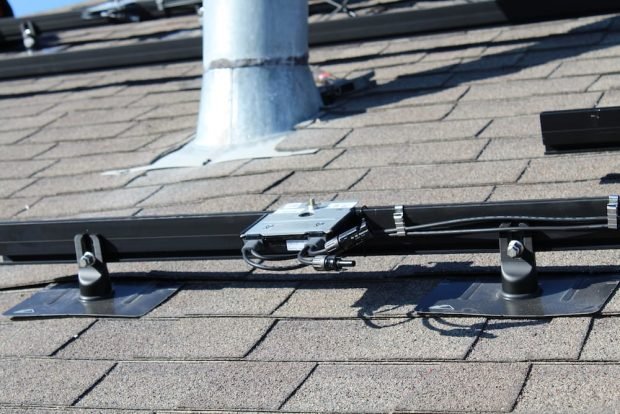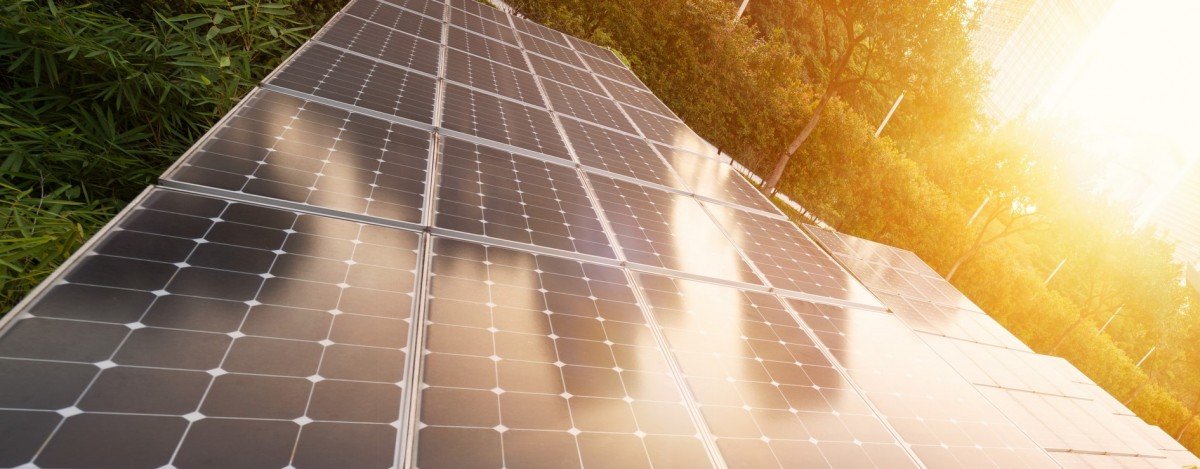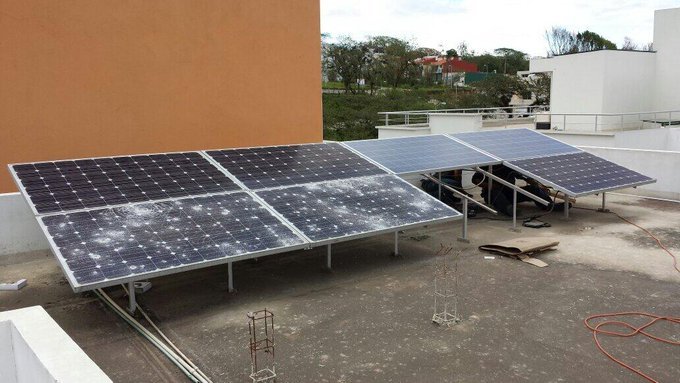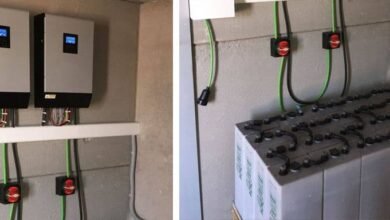
Hybrid inverters: how does a hybrid inverter work
In this article we will talk about hybrid inverters, I tell you what you need to know to understand how they work. A photovoltaic installation consists of several essential elements. The most important are photovoltaic panels, often made of silicon, energy optimizers, and an inverter, also known as an inverter.
Hybrid inverters: how does a hybrid inverter work and is it worth investing in such an installation?
The wiring and safety systems that guarantee the proper functioning of the entire installation also play an important role. In this article we will look at hybrid inverters. What are they and how do they work?
Types of investors
In practice, there are three types of investors:
- standard (also known as string or string),
- microinverter,
- hybrid.
The function of the series inverter is to convert direct current into alternating current, that is, that which flows in the domestic electrical system on a daily basis. It is centrally mounted and normally supports all photovoltaic panels by itself. It is also the cheapest and simplest solution, often chosen for small installations in the home.
Microinverters are a more expensive type of string inverter. They are installed next to each module, forcing them to operate as efficiently as possible (similar to power optimizers). The smaller dimensions of the devices also make the entire installation less warm and easier to expand.
In turn, the hybrid inverter works in two systems: on and off the grid. Dual mode of operation means that the device converts direct current to alternating current and vice versa. One of the main advantages of this solution is the ability to transfer power to the storage device.
The hybrid inverter performs three functions simultaneously:
- It is a photovoltaic inverter that converts direct current into alternating current,
- serves as> battery charger,
- acts as a converter that converts DC to AC.
The hybrid inverter “on-off grid” can operate both in a system connected to the grid (called on-grid) and in island systems equipped with batteries (called off-grid). It combines the advantages of both solutions and allows you to create your own home power plant. In many countries, hybrid installations rely on the legislative aspect, because they measurably relieve distribution networks and guarantee users partial energy autonomy.
The principle of operation of the hybrid inverter
The inverter uses the electrical current generated by the so-called photovoltaic effect. The solar energy that radiates onto the photovoltaic panels (or more precisely, the photons inside them) causes the excitation of the silicon electrons, which take on the photon charge and move in the opposite direction to the resulting electron hole. There is a potential difference because in the semiconductor “P” (positive) there are more electron holes than in the semiconductor “N” (negative), the relationship is the opposite. The flow of molecules forces the generation of voltage.
In addition, in the case of hybrid inverters, it is possible to store electricity in batteries, an operation somewhat opposite to that offered by a classic inverter. The excess energy generated is not sent to the operator’s network, but remains at our disposal.
Advantages of a hybrid system
Although hybrid inverters are technologically similar to string models, it is worth emphasizing their most important advantages and advantages over other solutions (eg microinverters).
If we consider using a photovoltaic network for the storage of electricity, without a hybrid inverter, we would have to decide on a costly and complicated investment. Connecting the battery to the installation requires the purchase of a suitable inverter, as well as energy storage, a cell charge controller and a system that monitors the efficiency of the entire process. It is related not only to high costs, but also to having large items. By choosing a hybrid solution, we get a device at a much more attractive price.
The smart software of such an inverter allows you to program battery charging periods only when it is beneficial to us. We can configure the device to accumulate electricity when its price is low or when the day is extremely sunny and the photovoltaic panels can operate without problems and at full power. Thanks to this, we optimize the energy production process and further reduce investment costs.
The great advantage of hybrid solutions is also the possibility of operating the installation from the level of a dedicated application. After logging in, the prosumer has access to the system configuration panel, reports on the operation and performance of the installation, and also has the option of submitting a service request. N Energia’s clients can also rest assured in this regard, because the work of its investors is supervised by employees at the headquarters of the technical department.
Smart solutions allow you to select the inverter operating model (for example, vacation mode or standby mode). By choosing them, we can be sure that electricity will be generated to a degree suitable for consumption. Controlling the configuration of the inverter allows you to extend the life of the entire PV installation and ensures that electricity is produced only when we need it.
Another issue is the possibility of limiting the energy losses that arise during the conversion from direct current to alternating current and vice versa. Modern hybrid inverters are built in such a way that they do not process the electricity flowing from the photovoltaic modules, but instead accumulate it immediately in the battery in the form of direct current.
Disadvantages of a hybrid installation
So, can it be said that hybrid inverter models are free from downsides? Unfortunately, not quite.
First of all, when it comes to converting backup power, many mixed models still have limitations. The problem is often the lack of so-called step, that is, the ability to power devices and charge batteries simultaneously.
Before buying, it is worth paying attention to whether the model has an emergency power mode, which allows you to simultaneously use battery reserves and regularly generated electricity.
Also, if the inverter output power is too low, the installation may not be able to maintain all phases in the event of a power outage. As a result, it may turn out that only one or all of them work, but only for the proverbial “half”.
A problem with existing off-grid installations can also be the incompatibility between the battery and the hybrid inverter.
Lastly, hybrid technology is not always suitable for outdoor operation. This is due to lack of compliance with relevant IP (Ingress Protection) standards and susceptibility to moisture or water vapor.
Possibility of oversizing the installation
The efficiency of a standard photovoltaic installation must precisely match the degree and characteristics of the home’s energy consumption.
When choosing a hybrid solution, investors have the option of connecting a standard power inverter to a large installation or, conversely, choosing a smaller inverter and pairing it with a medium power solar park. How is it possible?
Many hybrid models offer the option of maximizing energy production during certain times of the day when lighting conditions are poor (for example, during winter or at dawn or dusk).
However, installation oversizing must be approached with care. Too much imbalance can reduce profits, as no inverter can convert unlimited amounts of DC to AC. Also, too much energy flowing through the device can shorten its lifespan. It is worth remembering that the inverter is the most expensive and most fault-prone element of the photovoltaic system.
When choosing a photovoltaic installation, in case of a significant demand for electricity, it is advisable to opt for a three-phase photovoltaic inverter, because most buildings already have a three-phase electrical installation. Thanks to this, each phase will be fed symmetrically, and we will be able to make full use of the energy produced, instead of returning the surplus to the grid, as would be the case with a single-phase inverter. Single-phase inverters can be used for installations that do not exceed 3.68 kWp; this is the maximum limit that cannot be exceeded. The largest ones, such as 10 kW hybrid inverters, are already three-phase.
The benefits of energy storage
Hybrid installations allow electricity to be stored in special batteries. What are the benefits of such a solution?
First, the electricity stored in energy storage serves as a backup power source in the event of a grid power outage or photovoltaic system failure. The use of technologically advanced components and BMS (Battery Management System) software allows continuous monitoring of the battery charge level and ensures safe use.
Many energy storage systems can be expanded with additional cells, effectively creating a complete battery network.
Unlike classic inverters that transfer surplus electricity generated to the grid, mixed models allow inventories to be accumulated and used for their own use.
Hybrid inverters from reputable companies have a long-term guarantee and guarantee a high degree of protection (usually IP65), which allows their operation in external conditions.
When opting for a photovoltaic installation based on hybrid technology, we opted for a flexible, economical and, above all, future-proof solution. The energy storage market is growing more and more, and companies such as Huawei, Sofar and SolarEdge are at the forefront in offering access to innovative technologies. Everything indicates that hybrid photovoltaic networks will slowly displace standard photovoltaic installations.
We will help you at each stage of the investment.
If you want to speak with our advisor about the photovoltaic installation that will provide you financial, technical and electrical security, use the contact form below ; we will call you back.






